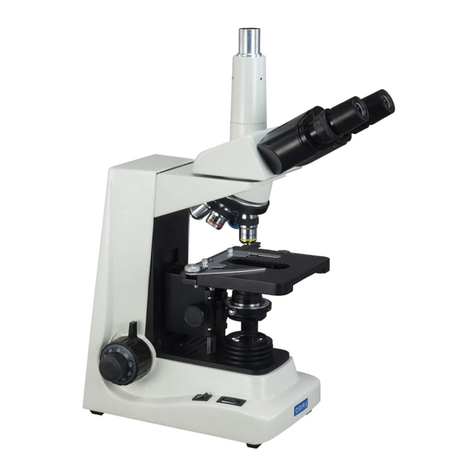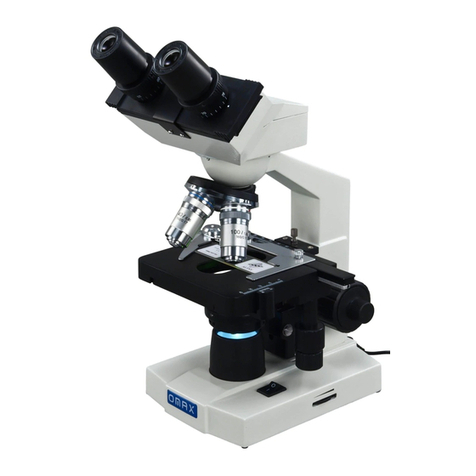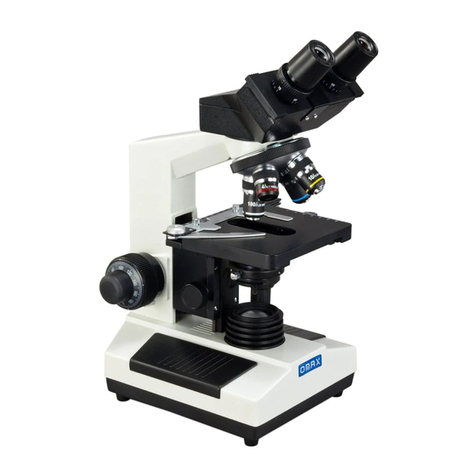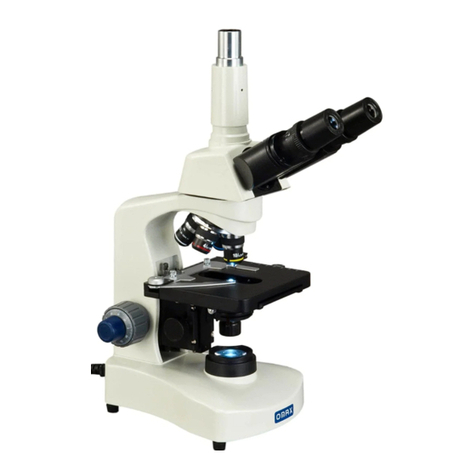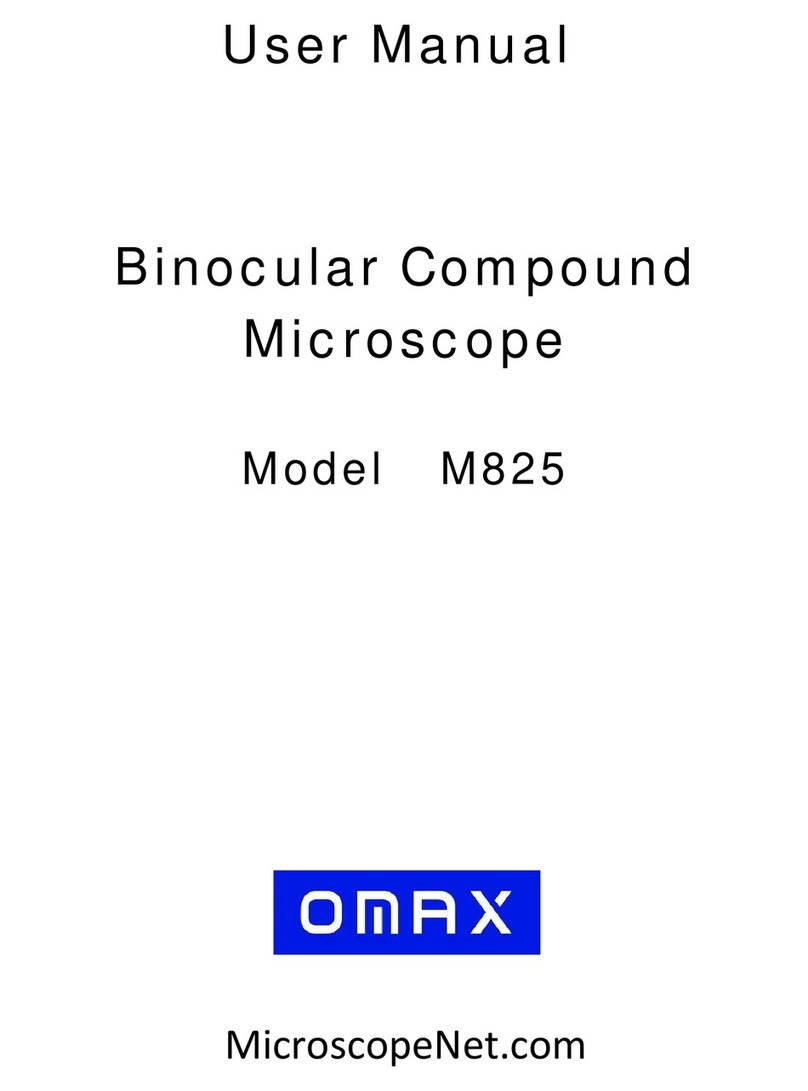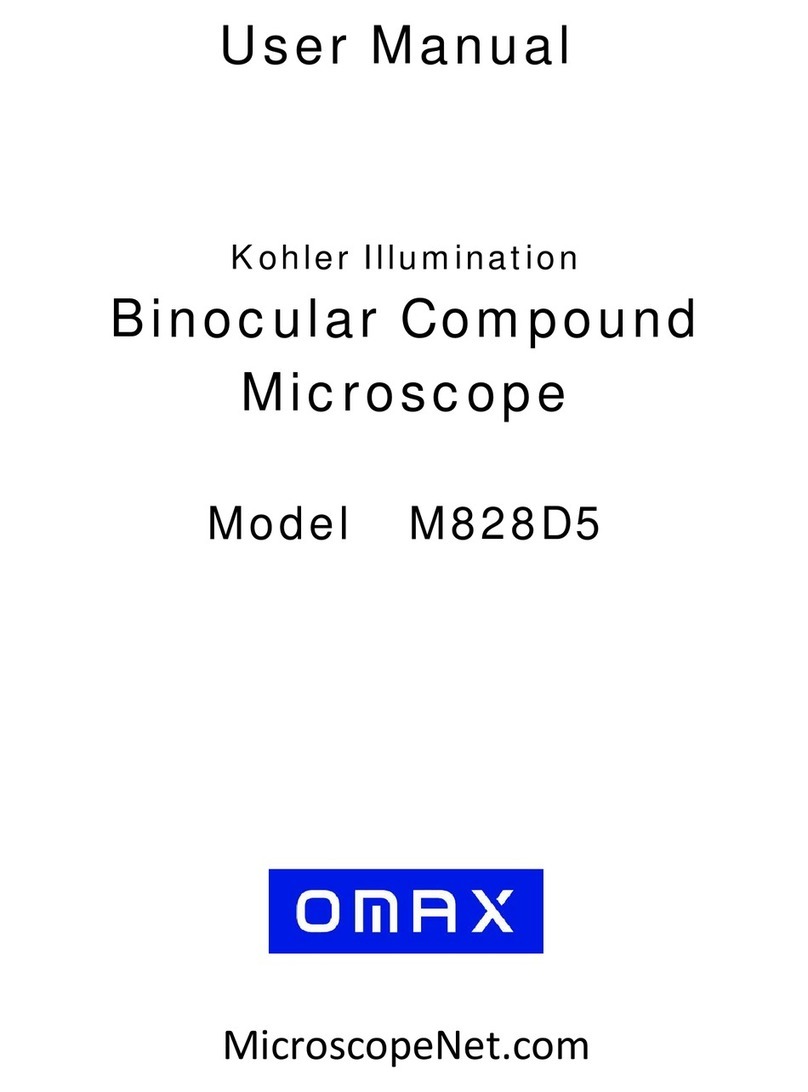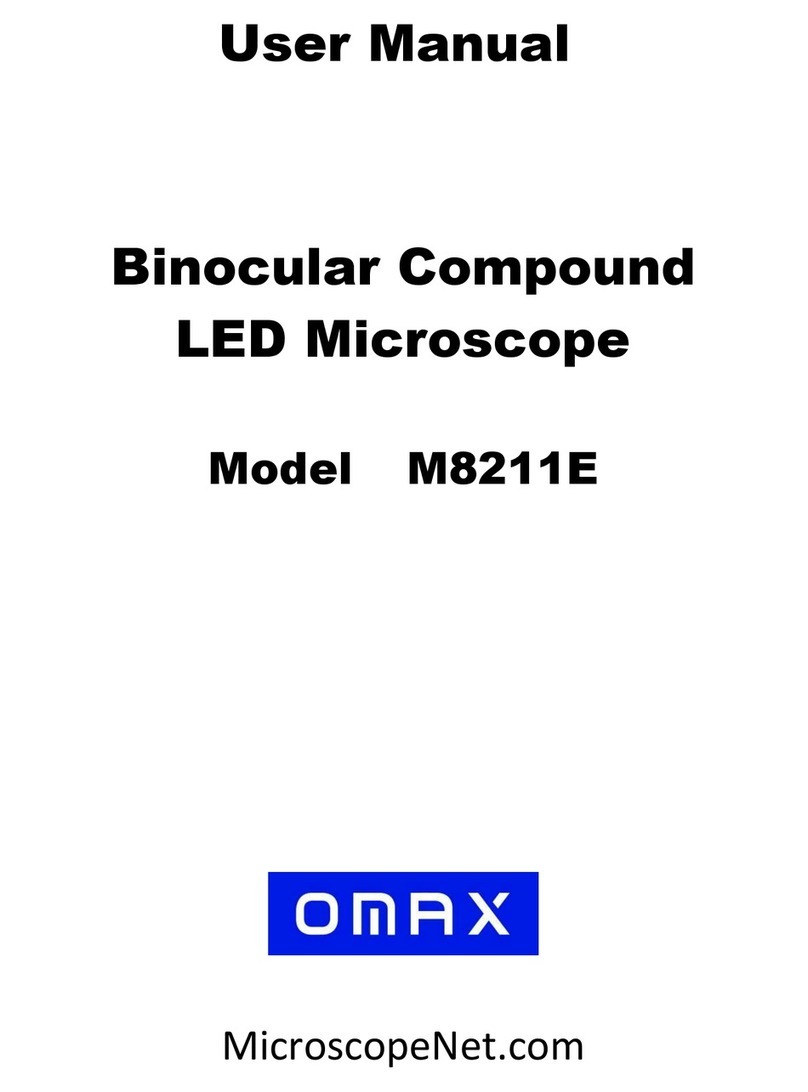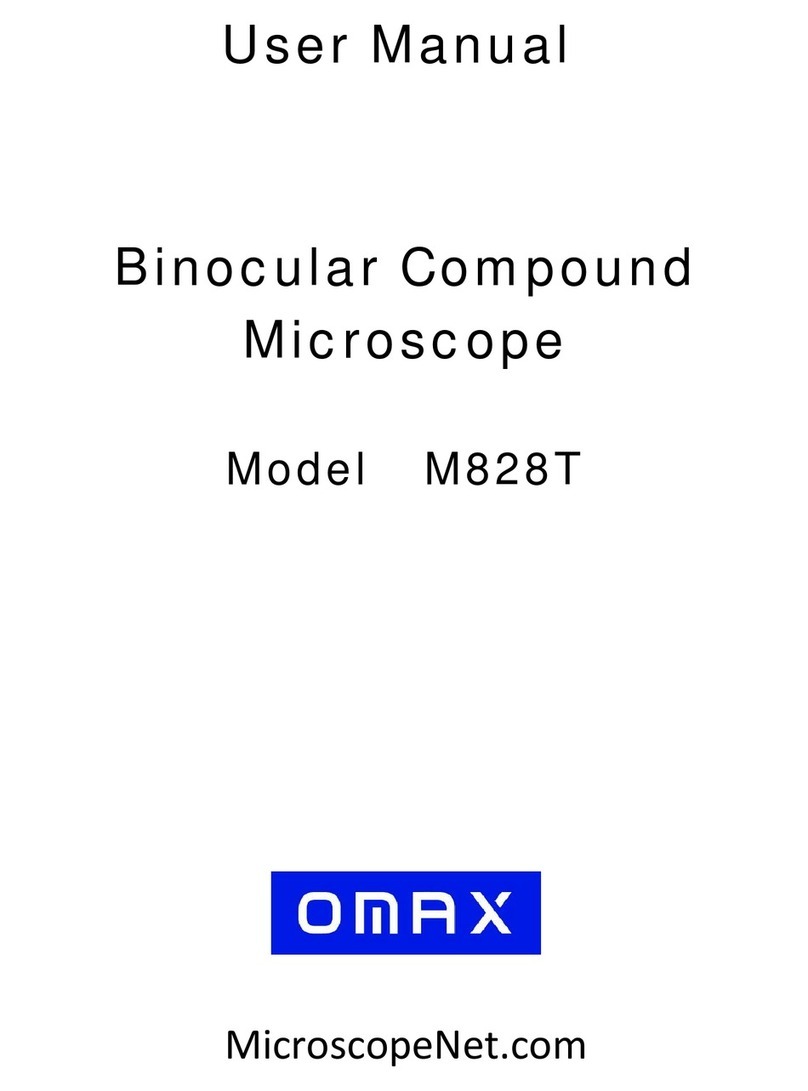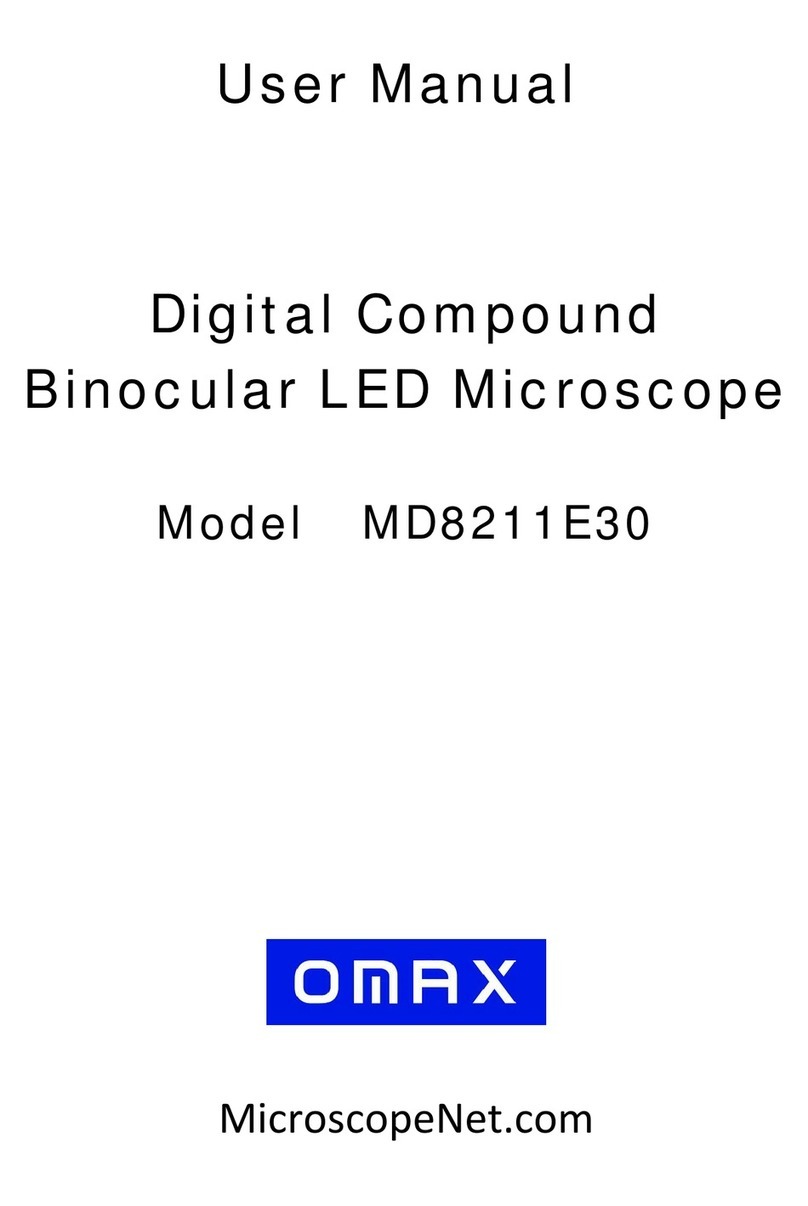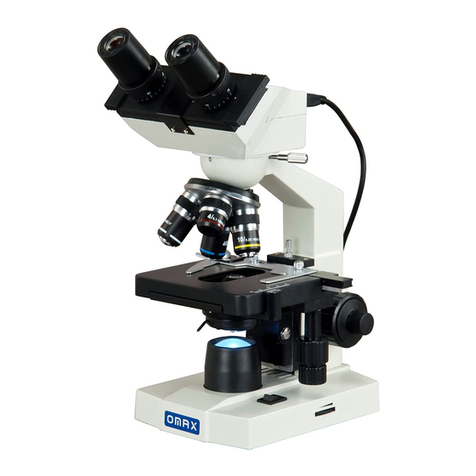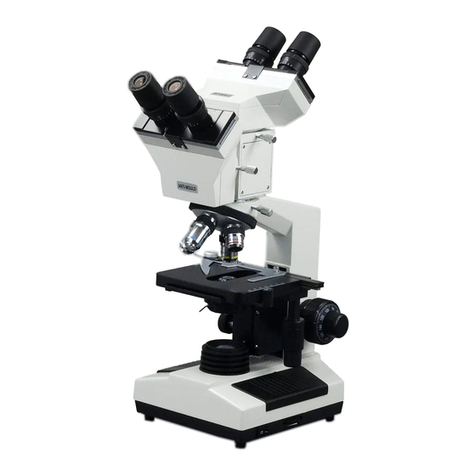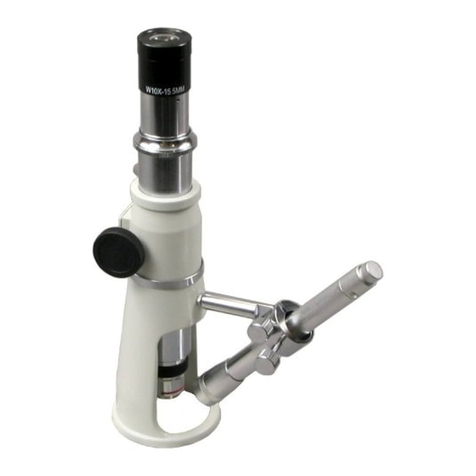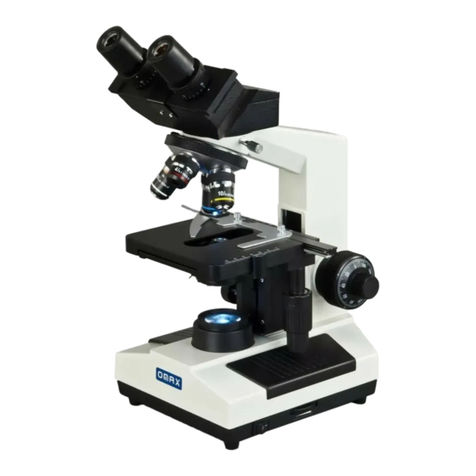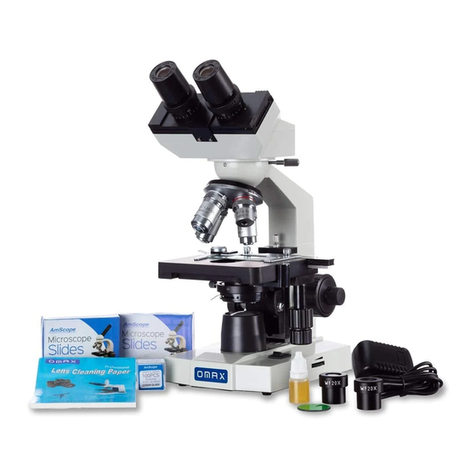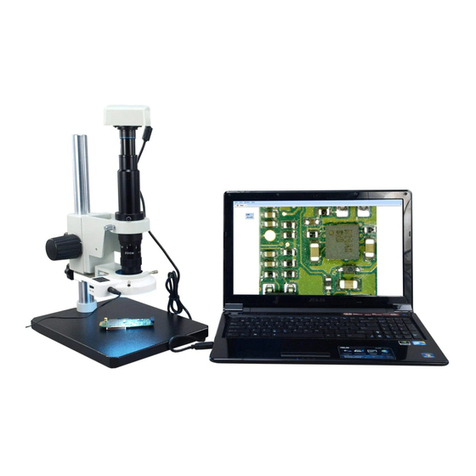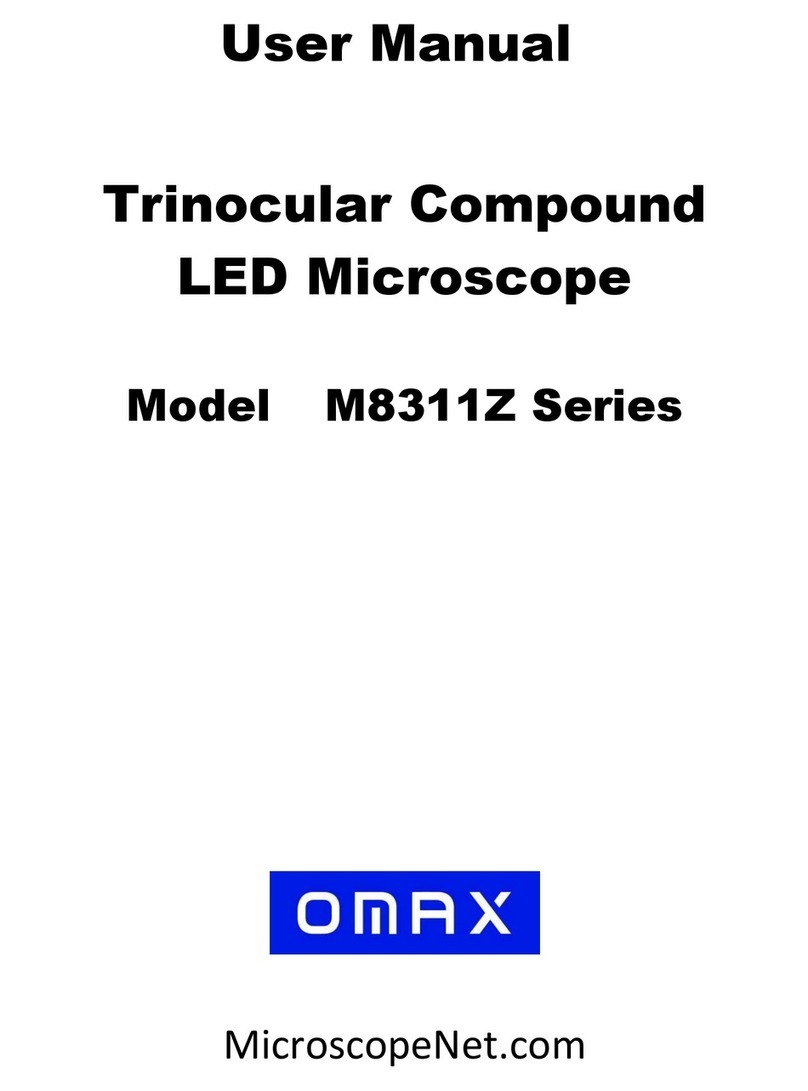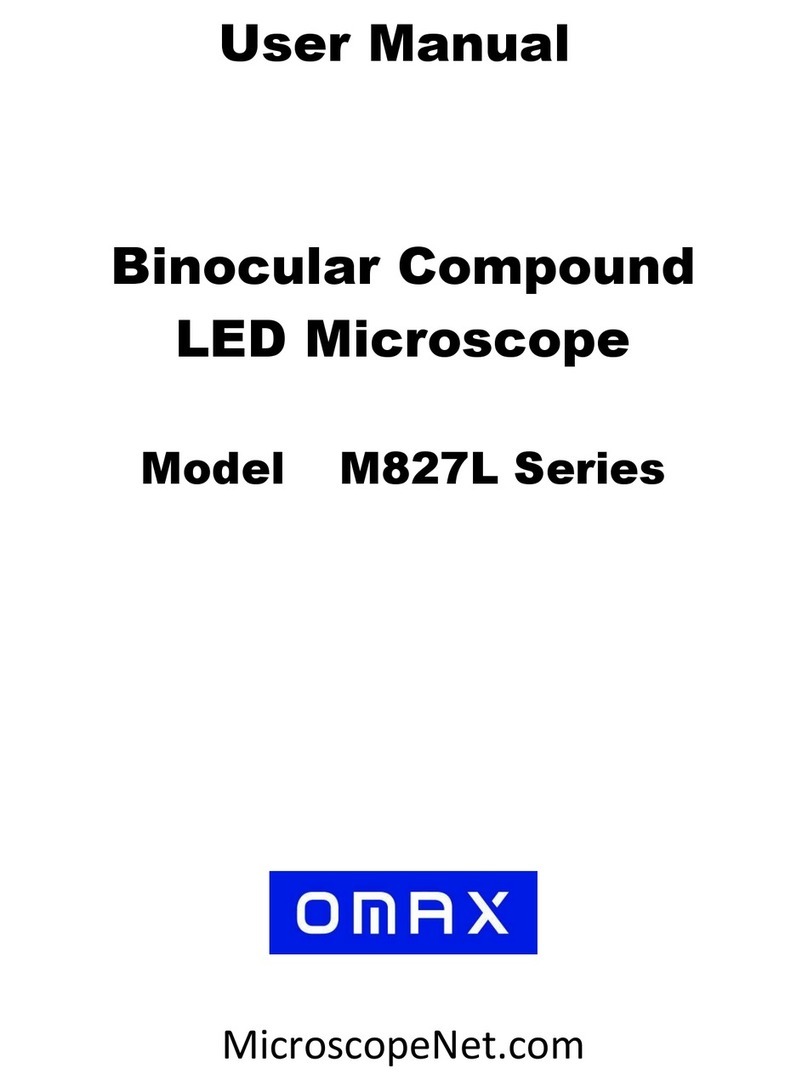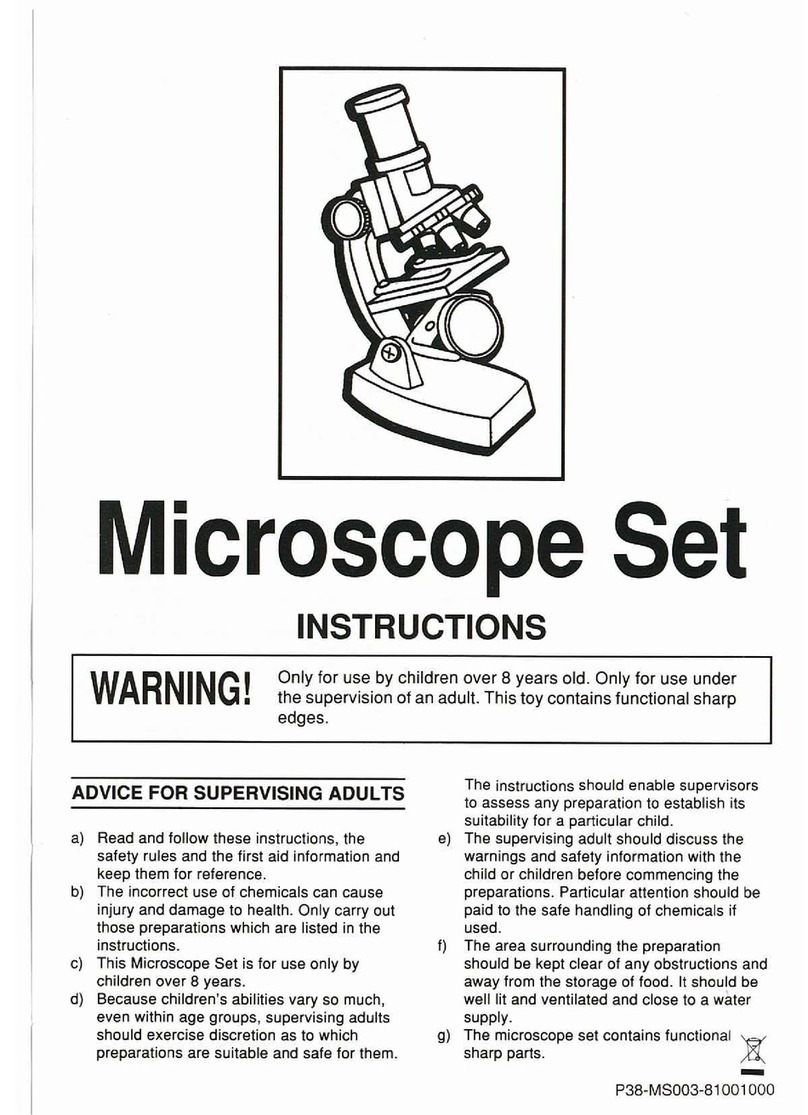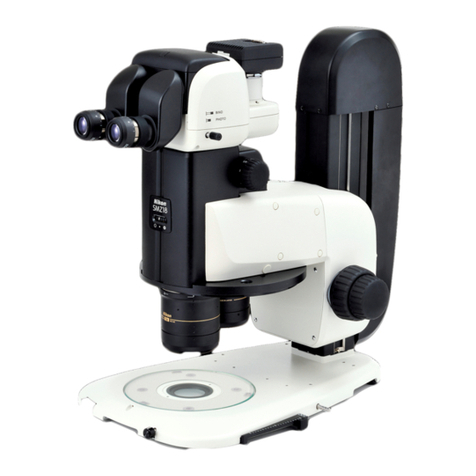www.microscopenet.com
8
Tips:
a) The condenser is raised when using high power
objectives and lowered when using low power
objectives.
b) The top lens is flipped up by turning the top lens
knob when using high power objectives.
c) To prevent your specimen slide from making
contact with an objective, raise the stage to its
highest position without contacting the 100X
objective; then tighten the stage upward stopper
(Fig. 6). Give the stage a tiny extra moving space
to ensure the objective can be focused every time.
3.4 Adjusting interpupillary distance
While observing with both eyes, hold the left and right eyepiece tubes then swing
them around the center axis. The interpupillary distance is correct when the left and
right fields of view converge completely into one image.
3.5 Adjusting eyepiece diopter
1) Using the 10X objective and your right eye only, observe your specimen through the
eyepiece and bring it into focus by adjusting the focus knobs.
2) Then observe the specimen with your left eye only through the left eyepiece. If the
specimen is not in focus, turn the diopter ring on the eyepiece tube until a sharp
image is obtained.
3.6 Applying the immersion oil
1) Rotate the objective nosepiece to seat the observing position between the 40X and
100X objectives as shown in Fig. 7 (a).
2) Place a drop of immersion oil on the slide cover as shown in Fig. 7 (b).
3) Rotate the objective nosepiece to seat the 100X objective to the observing position
until you hear a “click” sound.
4) After observing the specimen, use the lens cleaning paper to clean the 100X
objective lens gently and the specimen in time.
5) If it is hard to clean, you need a little bit alcohol to clean the 100X objective lens and
the specimen.
